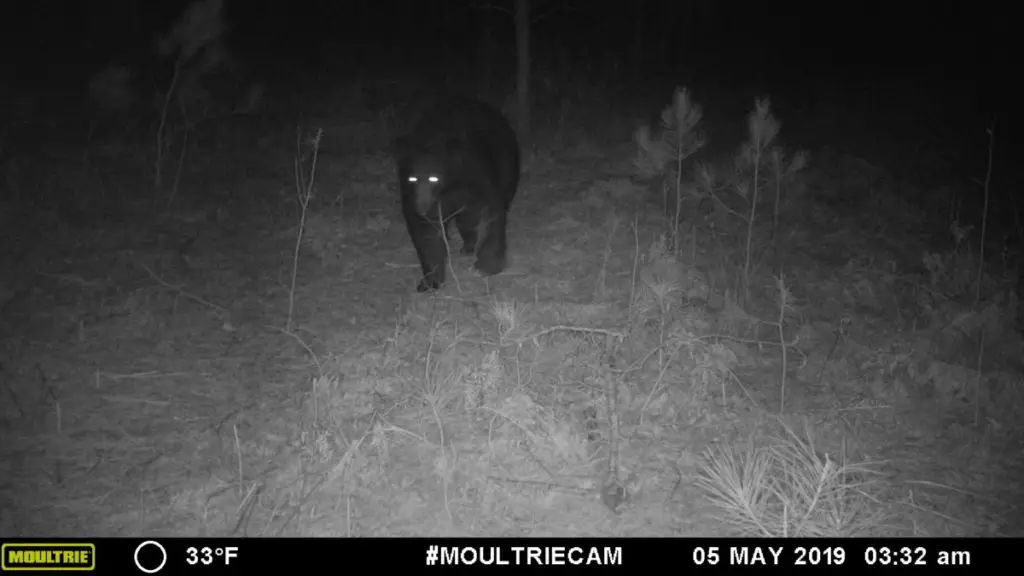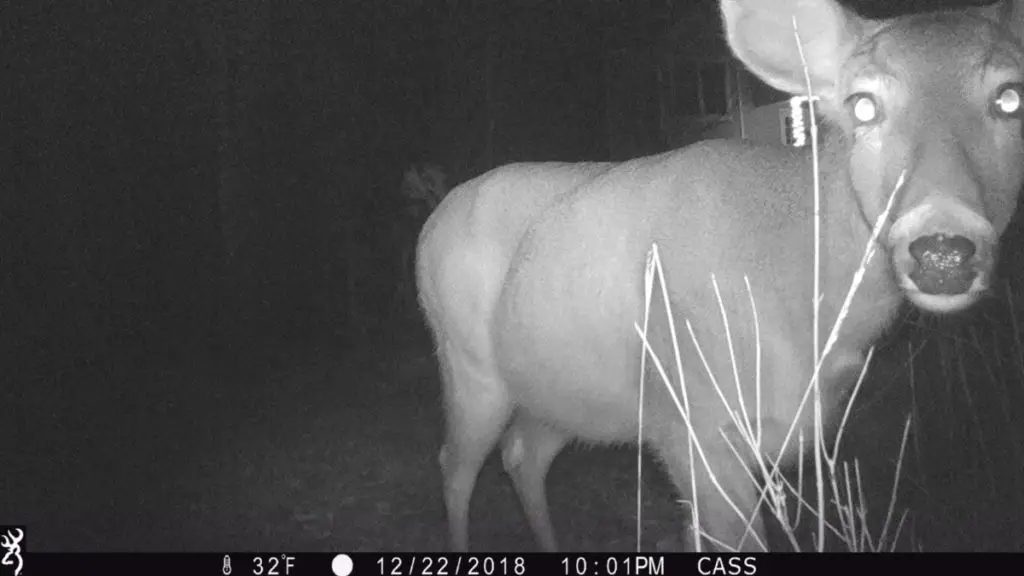One of the most frequently asked questions that we receive is based on the amount of noise trail cameras make. This question makes sense as most of us are trying to use cameras to be a discrete as possible while collecting needed information.
But when we get photos of deer looking directly into the camera, we can’t help but wonder if the trail camera itself is making noise.
Most cameras will make an slight audible noise. This is most common during night time photos, when the IR filter mechanically moves, making a clicking sound. Trail cameras with dual lenses, will not produce this sound as they have one lens that has a permanent IR filter that does not move.
Mechanical Noise
Many people relate the noises that trail cameras make to the sound of the shutter opening and closing. This is a common thought process, as we all grew up associating the “click, click” noise that cameras make to getting your photograph taken. This sound has been instilled in us from point and shoot cameras.
While that noise is indeed the sound of the shutter, professional photographers, and hobbyists use cameras such as DSLRs that have mechanical shutters, where as trail cameras, do not actually have a shutter that physically opens and closes. Instead trail cameras simply turn the image sensor on and off, giving it the same affect that a physical shutter would. The act of turning the image sensor on and off in fact does not make any noise.
So, what noise does a trail camera make? Well, all of the noise that a trail camera makes is from any mechanical action or movement, such as an IR filter dropping in front of the lens or the eye of a panoramic trail camera moving.

IR Filters
During nighttime photos, trail cameras use an artificial light source that is called a flash. The flash provides light to the area, allowing the photo to have proper exposure. On today’s cameras, you will often see that most manufacturers use infrared and black flash. In an attempt to not spook game with a sudden flash, these light sources produce a light that is a wave length that our eyes can not see.
The caveat to this is that the image sensor of the camera, that is designed to pick up the same light that we see, can not absorb this light either. So, to combat this, what is known as an infrared filter drops down in front of the lens, blocking infrared heat, and allowing visible light to go through to the image sensor. The mechanical movement of the IR filter is the noise that you can hear.
How loud this noise actually is depends greatly on the engineering of each camera. The amount of noise can change from brand to brand, and even from camera to camera. How often this happens also depends on the engineering of the camera as well.
Some trail camera manufacturers design their trail cameras to drop the IR filter once there is no longer adequate light in the available area, and then removes the IR filter when light becomes adequate again, typically around dusk and dawn. This makes sure that the trail camera only makes a slight clicking noise twice a day.
Other manufacturers, enact the IR filter to drop and raise with every trail camera trigger, subsequently making a noise every time a photo is taken during the night.
Before you place your trail camera in the field, you can test to see which way your camera is engineered. Simply go into a dark room, like a bathroom or closet, and turn your camera on. Hold the camera up to your ear to listen for the IR filter to drop. Make motion to enact the PIR sensor to trigger the camera a few different times. If you only hear the filter drop the each time, you know that your camera is going to make that noise in the field during every night time photo.
Panoramic Trail Cameras
A few years ago panoramic trail cameras hit the market. These were a big deal as they promoted being able to have a field of view up to 4 times of a standard trail camera. They claimed to be able to cover more area than three trail cameras staggered around the same tree. While their claims were probably true, what they didn’t explain is that they also made 5 times the amount of noise.
Panoramic cameras had what was called a moving eye. Basically, they used multiple PIR sensors to create an incredibly large detection angle, and when one PIR sensor, detected a change in infrared, the moving eye would shift to that zone to take the picture. The moving eye, was a mechanical device that had the lens of the camera attatched.
Every time the lens moves to a zone, the mechanical movement would make noise. What is even worse, is that as an animal moved across the front of the camera, it would move into different detection zones, creating the lens to move from zone to zone, making noise all along the way.

Flash Noise
For years I was convinced that the flash of the trail camera actually made a noise. I shut myself in a closet and tested every trail camera I owned creating a spread sheet of which trail cameras made noise, during nighttime photos and which ones didn’t. Through trial and error I was persuaded that cameras that had a longer more powerful flash distance, made more noise when turning on and off.
To this day, to be honest I am still not sure if the flash itself makes noise, or the sounds I was hearing was simply the IR filter moving up and down. But what I do know is that lights are a product of an electrical current that is conducted through a gas that creates a shock wave, similar to what causes lightening. While in the case of a trail camera’s flash, it is considerably less intense, it would give merit to the possibility that the produced light does, or at least could make some audible noise.
Dual Lens
Over the last couple of years, dual lens trail cameras have begun to gain in popularity. Manufacturers such as Browning, Wildgame Innovations and, Moultrie have all begun to produce cameras with two lenses: one dedicated for daytime photos, the other for night time.
These trail cameras do two things. First of all they have the ability to produce better quality nighttime photos then they did before. With trail cameras, the aperture on the camera lens is a fixed aperture, forcing single lens trail cameras to have the same depth of field during daytime and nighttime photos. This created a strain on the amount of light that was allowed to pass through during nighttime photos.
With a lens that is dedicated to nighttime photos, the fixed aperture has the ability to speficically set to less depth of field, allowing more light, and better exposure into the photo.
Secondly, and more important to this topic, the designated nighttime lens already has an IR filter in place. This eliminates any mechanical movement that you get from a single lens trail camera, thus making it virtually silent.
One Other Option To Stop Noise
Aside from avoiding any trail cameras that have unnecessary mechanical movement such as panoramic trail cameras, or using dual lens trail cameras there is one thing that you can do to eliminate noise from a trail camera, and that is to not take any nighttime photos.
For most of us, this is not a legitimate option, but those who do not need the information that night time photos gives you, you can simply turn it off. This will stop all movement of the IR filter, making your trail camera silent.
To turn off night time photos, simply go into the menu options in your trail camera and adjust the start and stop time. Set the start time after the sun has come up and the stop time before the sun goes down.
setting the operating hours.

